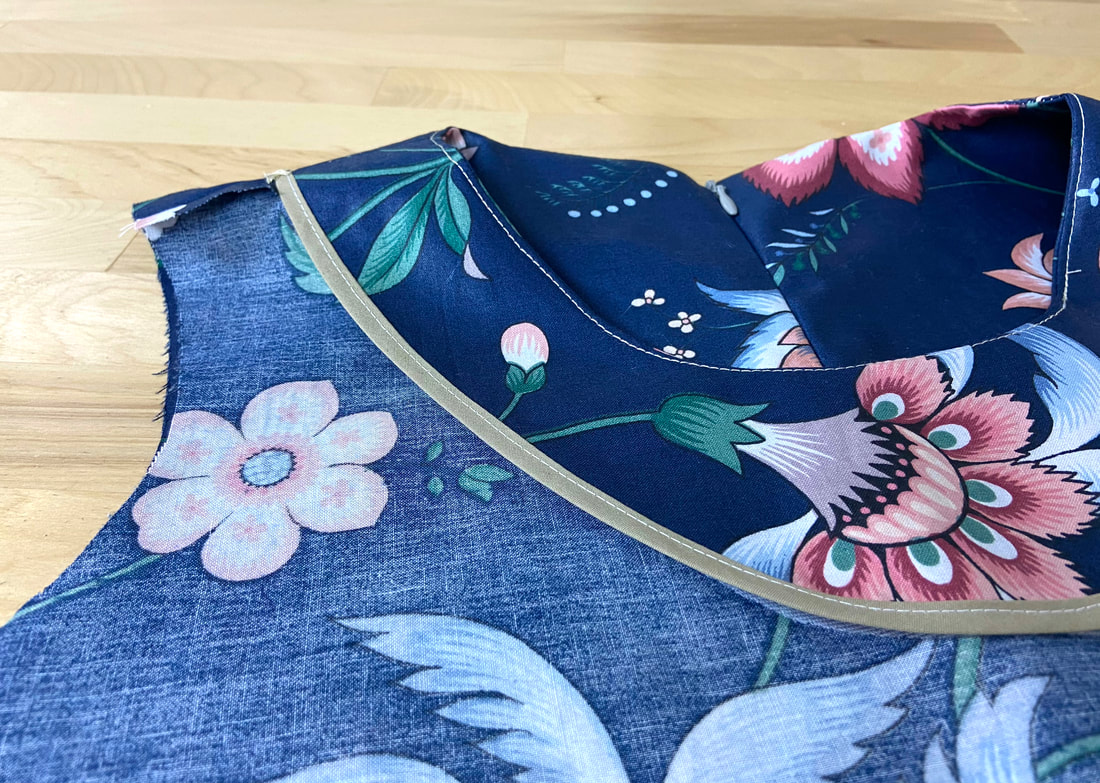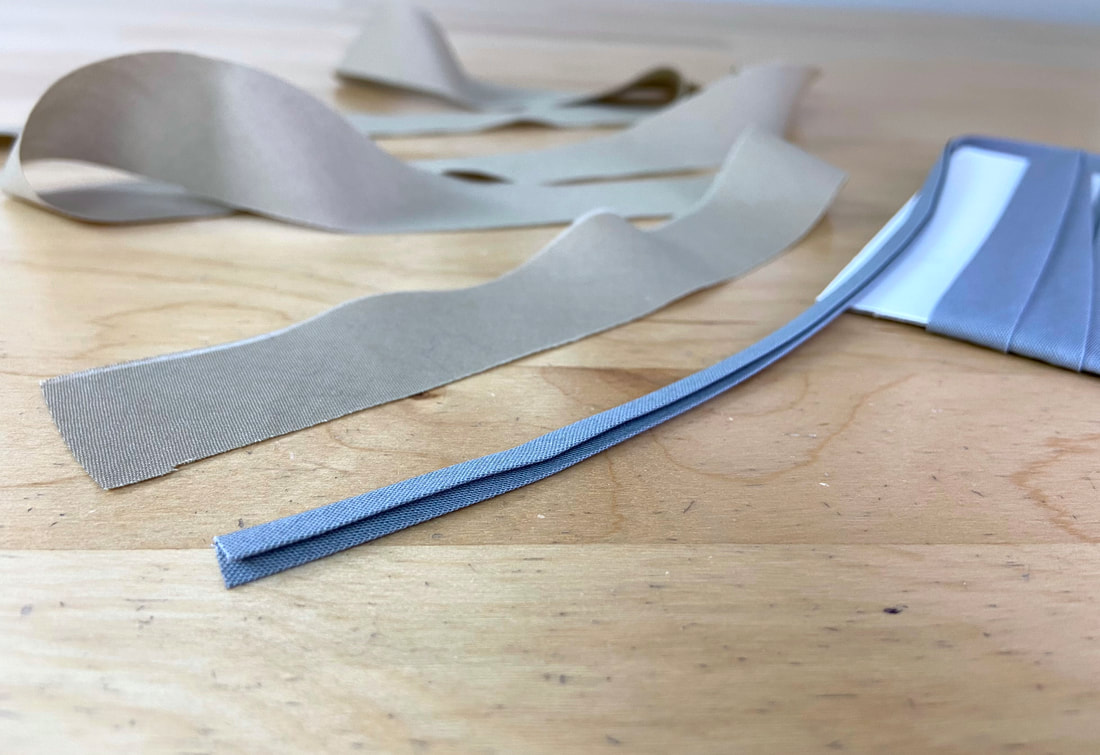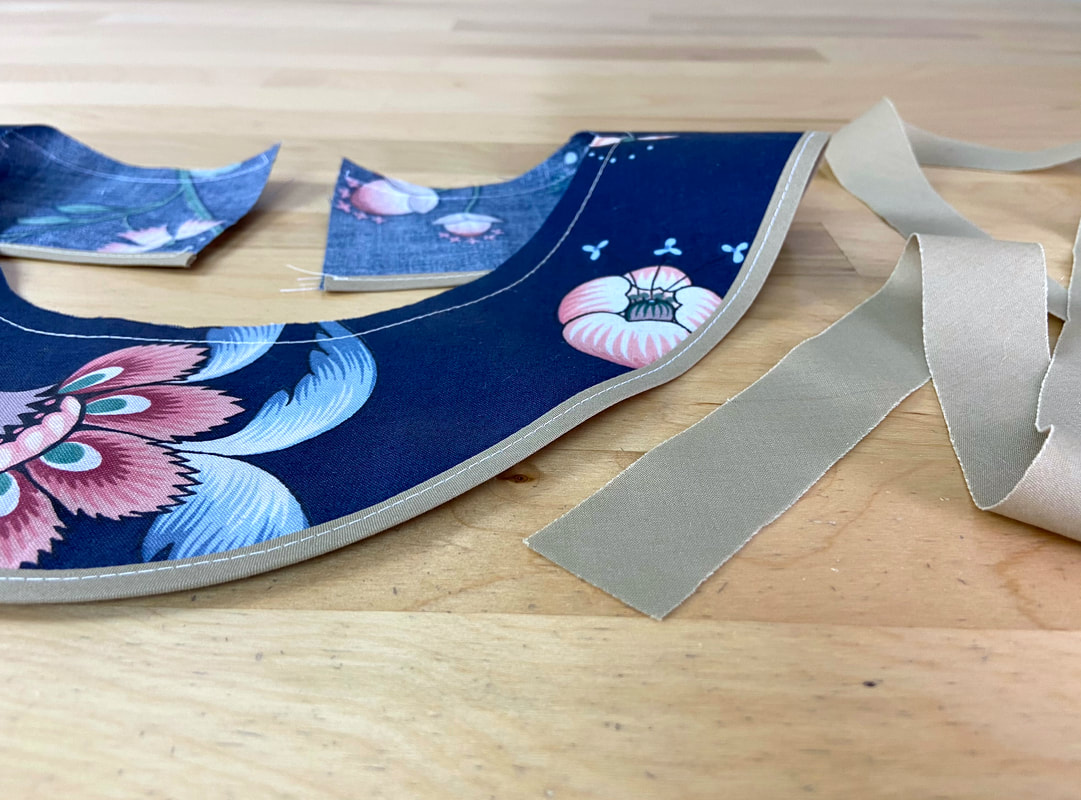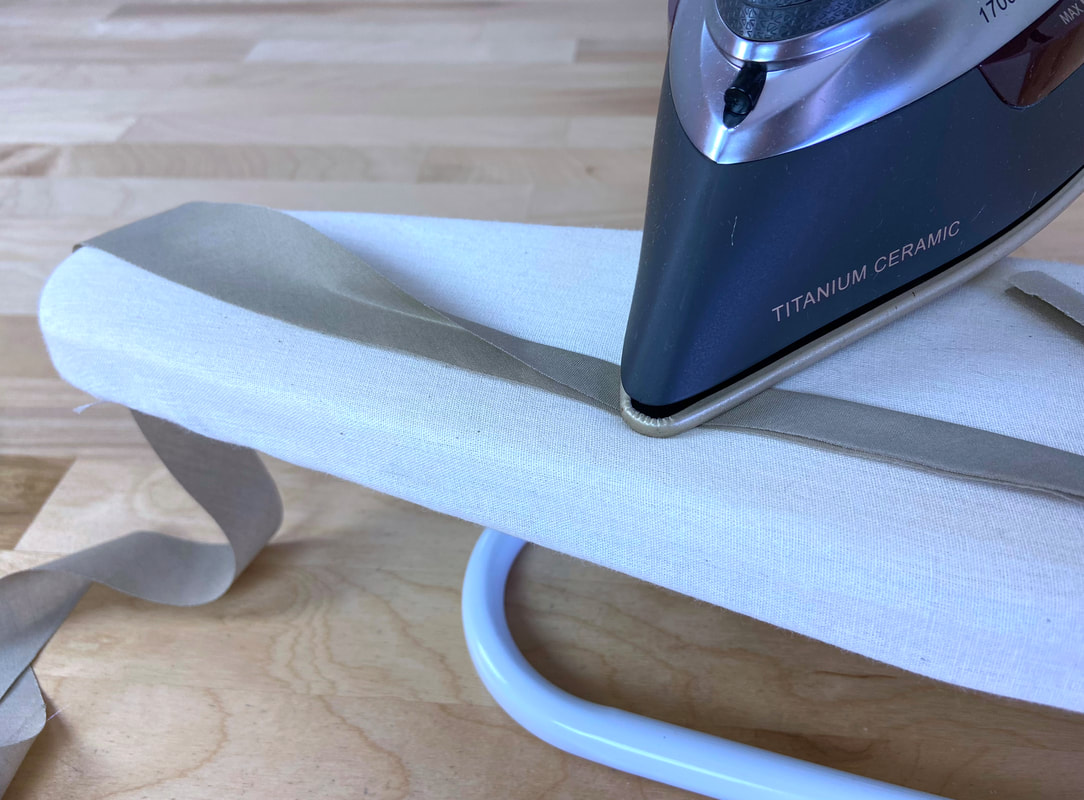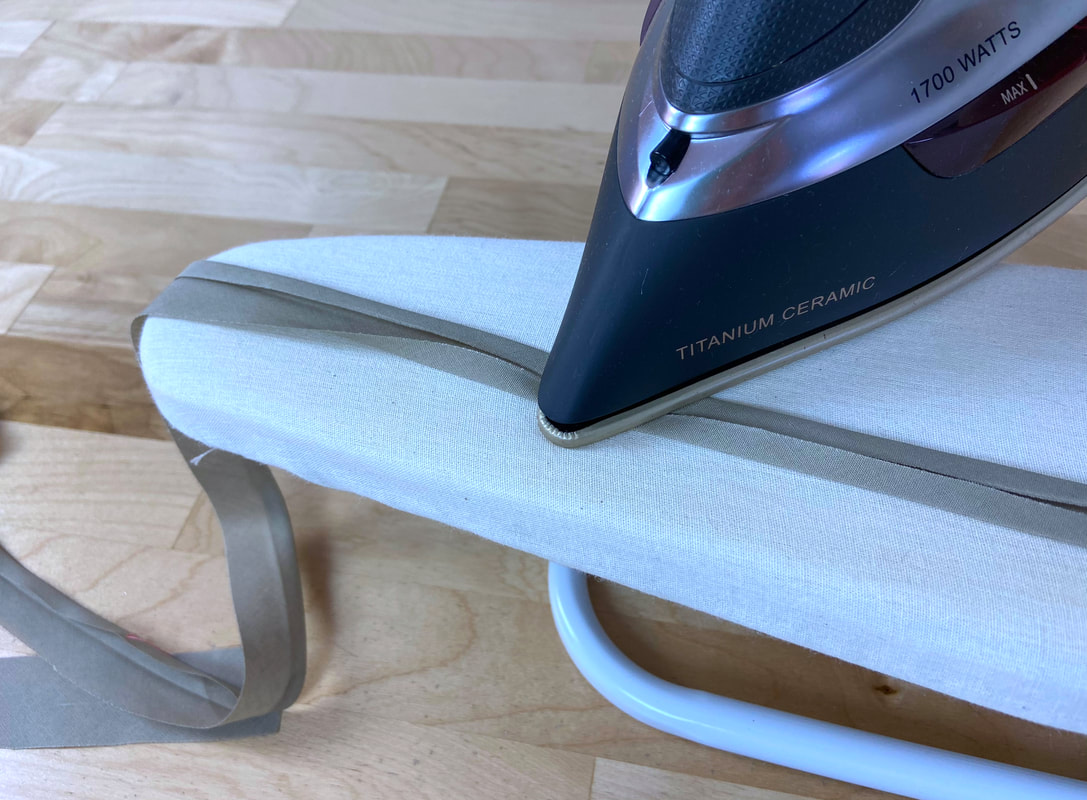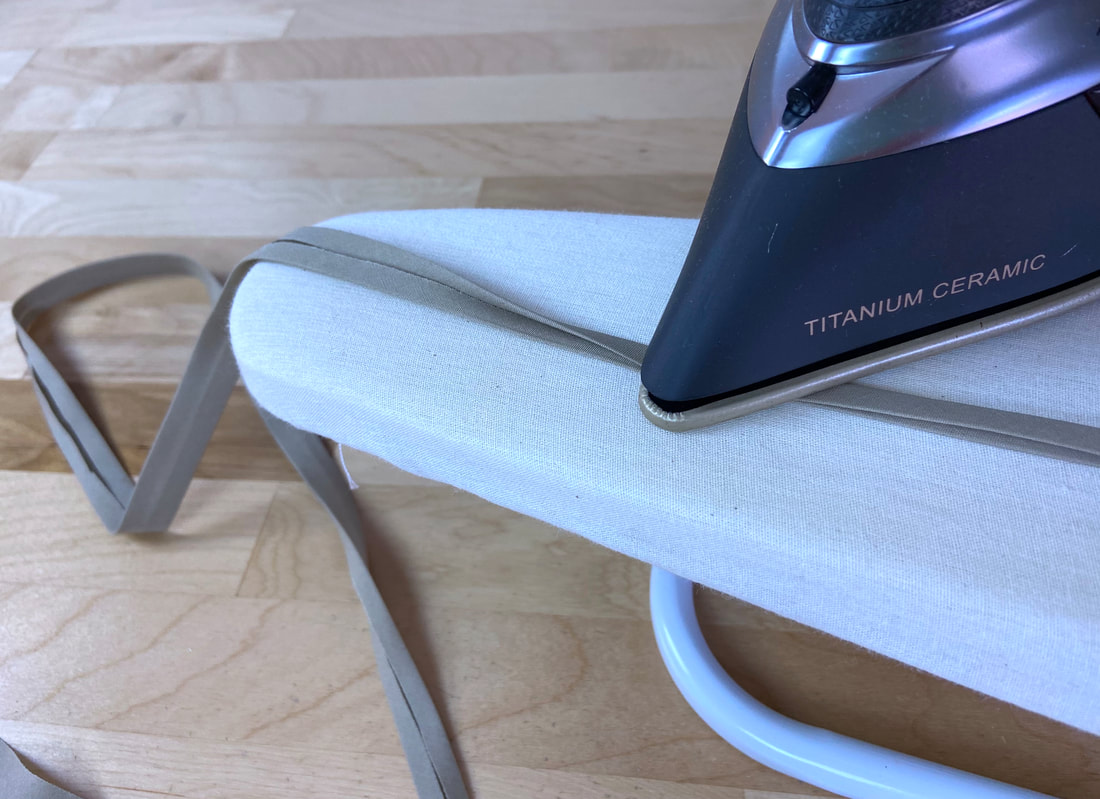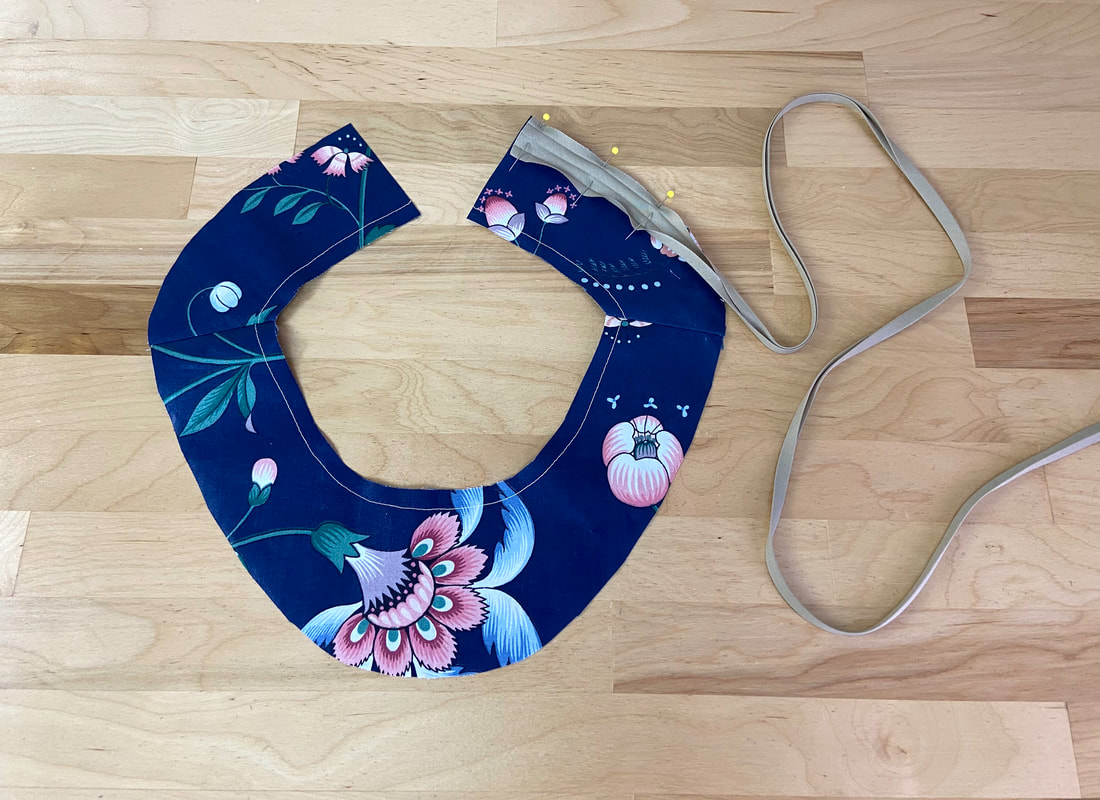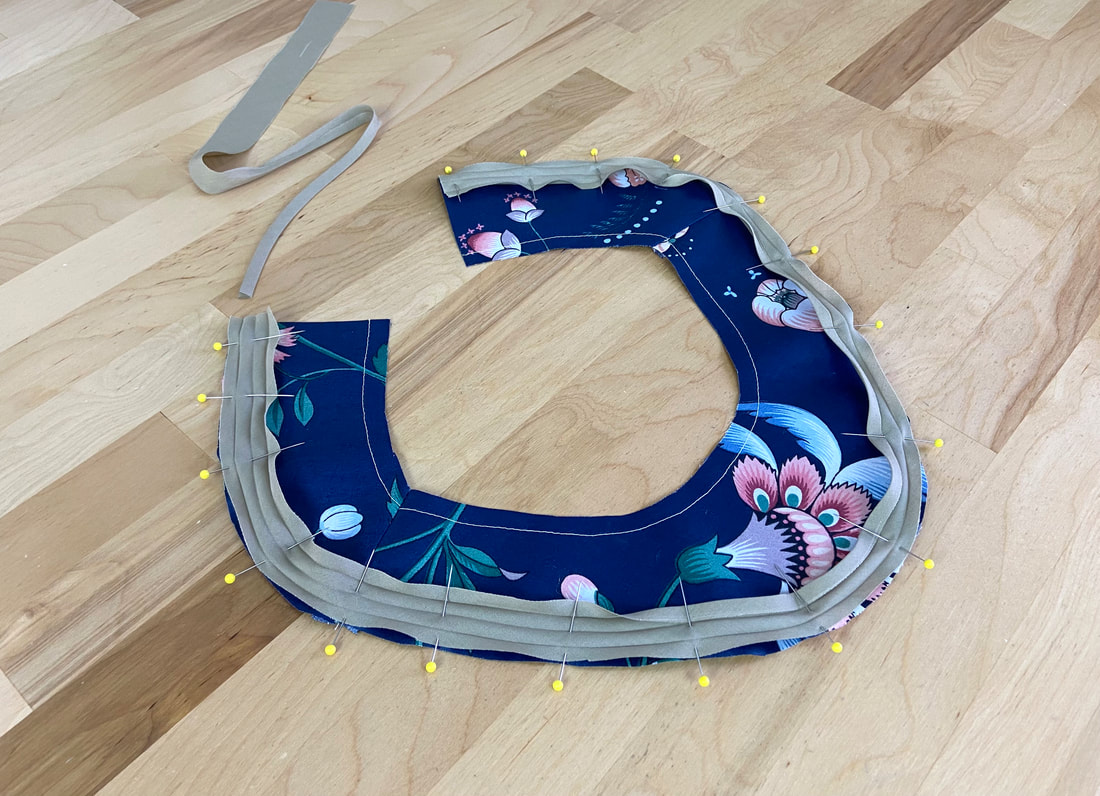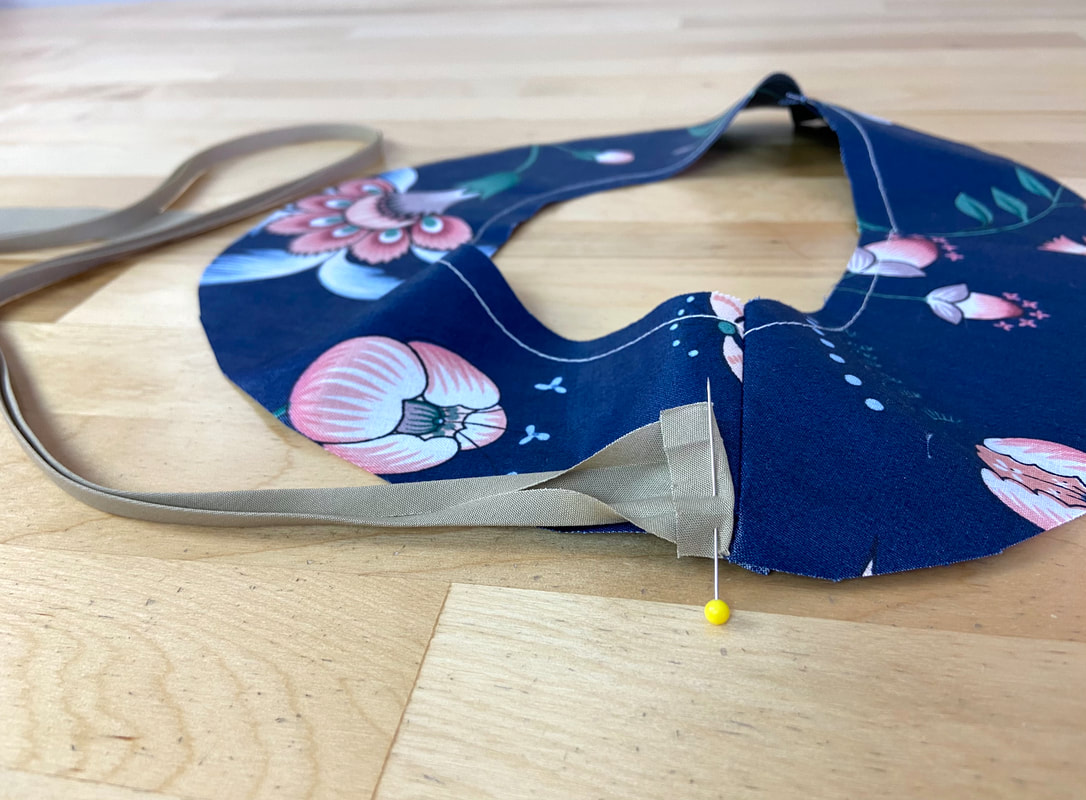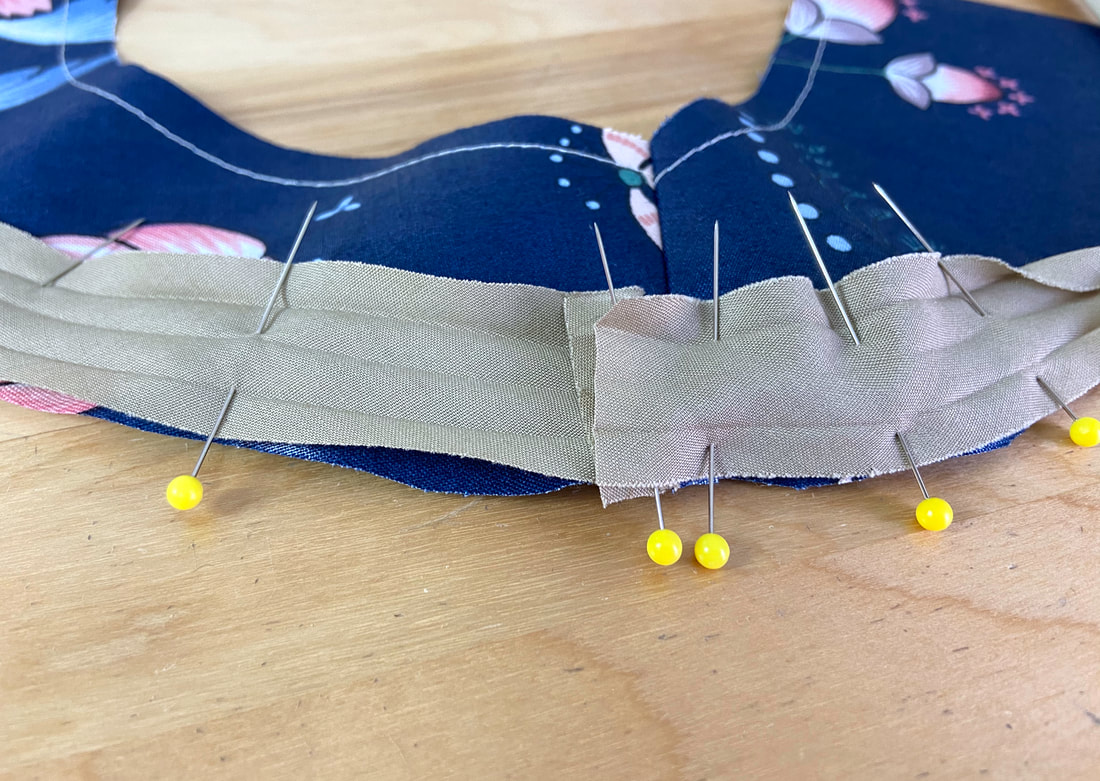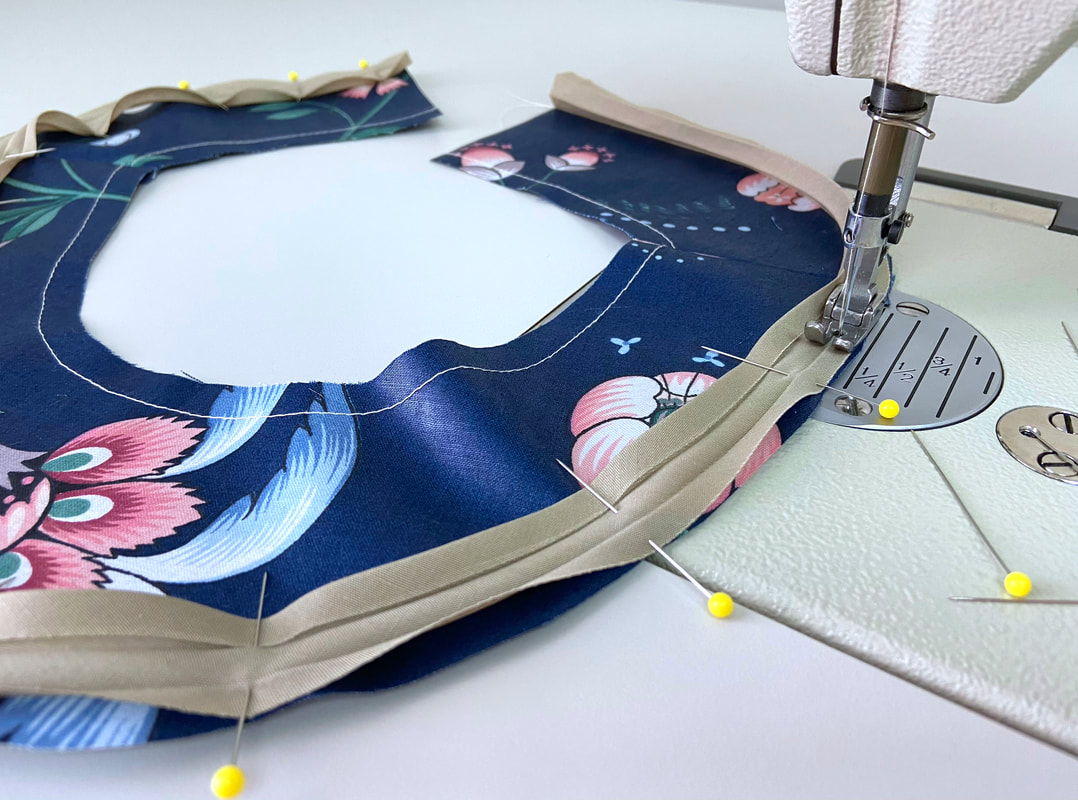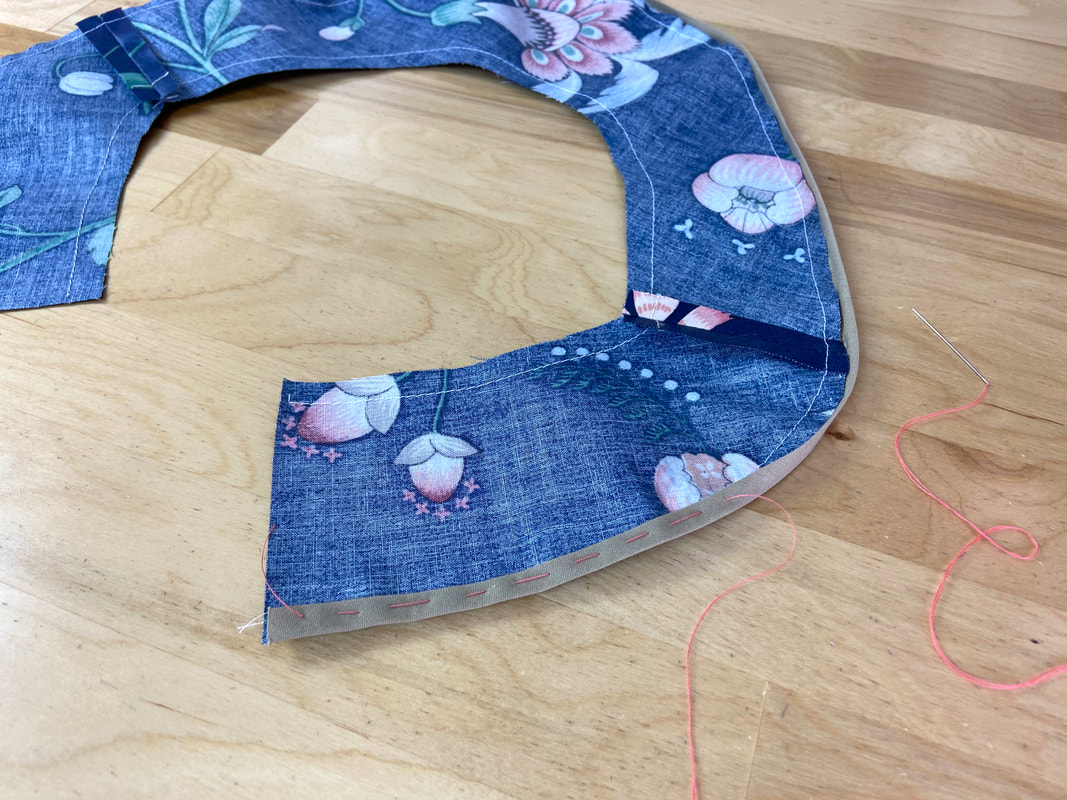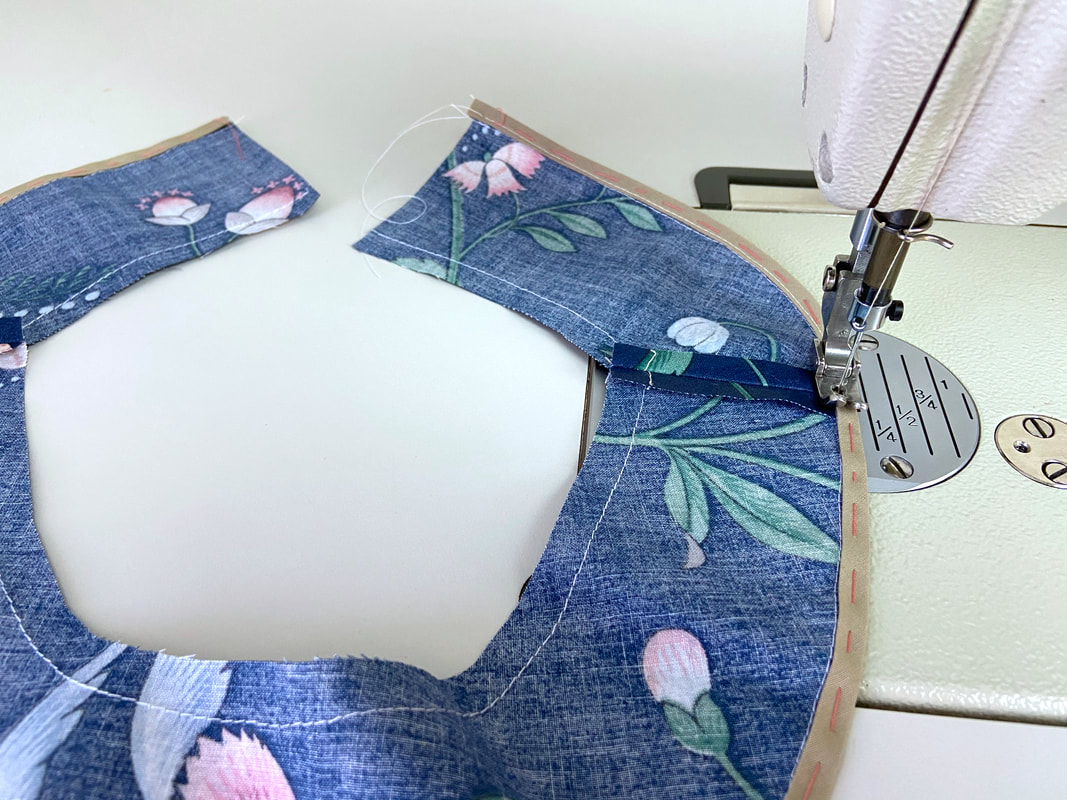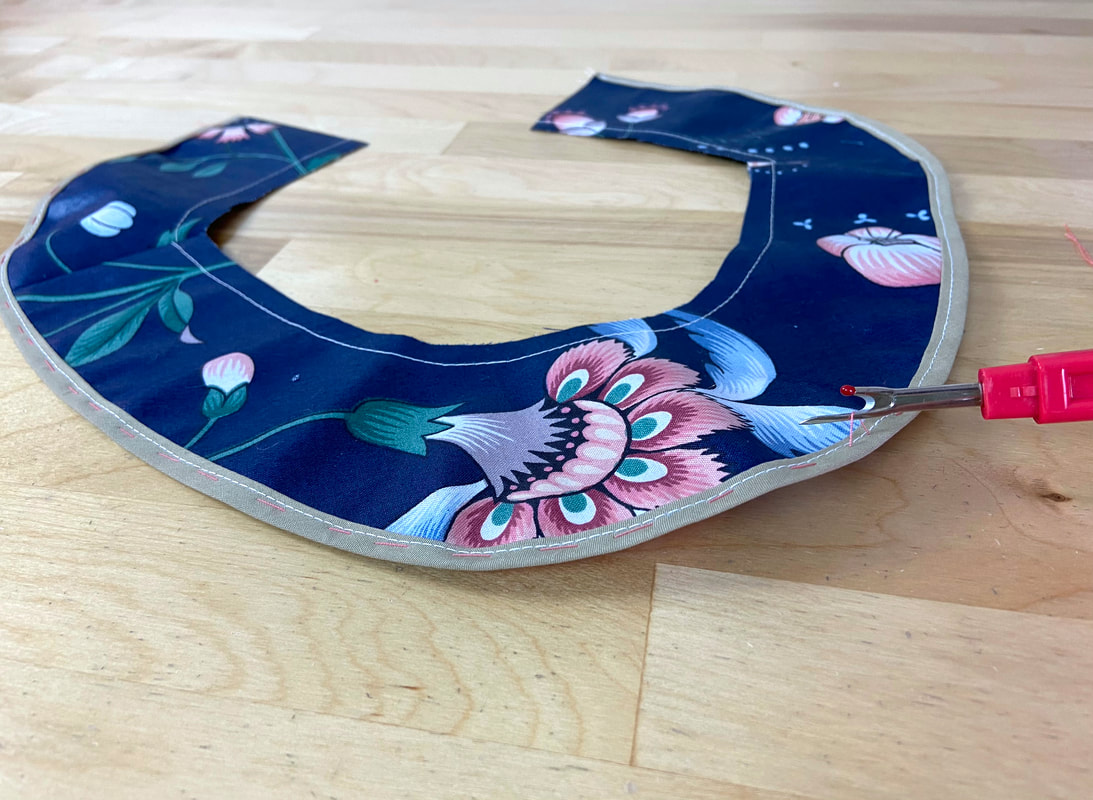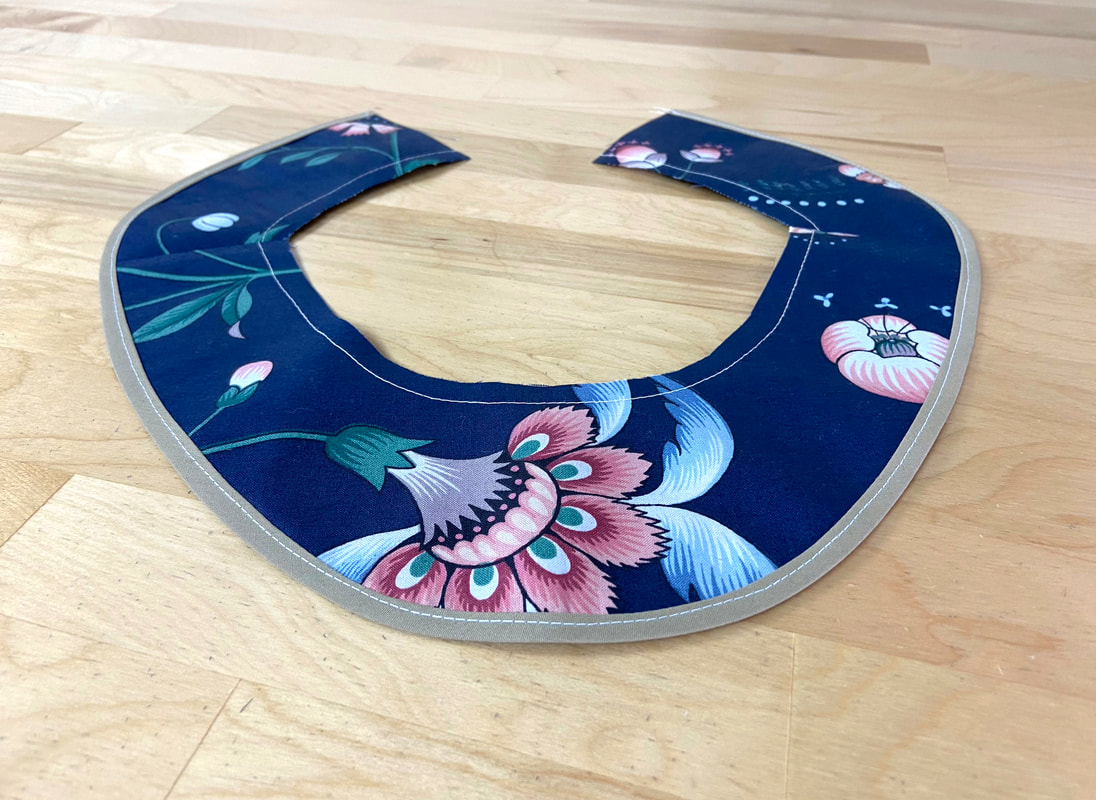Similar to bound seam allowance edges, a bound facing edge is finished with double folded binding. The folded binding wraps around the raw facing edge to enclose it for a fully-sealed finish.
For best results, the binding should be cut from a lightweight lining fabric. The light fabric will provide a smooth, less-bulky finish. If you prefer not to make your own bias binding at home, you can use the prepackaged (pre-folded) binding available at your local fabric store.
To learn how to make your own binding at home, check out this tutorial: How To Sew Continuous Bias Binding
In this tutorial, the binding strip is cut from a thin lining material. The initial fabric strip is 1” wide and long enough to cover the entire outer facing edge plus a few additional inches for excess. In the application process, the bias fabric strip is folded down to a 1/4” width.
It is, of course, crucial to cut the fabric strip on the bias as this provides enough stretch for the binding to mold around the facing’s curved edge.
1. To facilitate the sewing process, fold the bias fabric strip down the center with wrong sides touching and iron the fold.
2. Next, fold and iron each one of the lengthwise edges in such that they meet at the center crease line. It is easiest to fold and iron one edge at a time.
3. Last but not least, fold down the center one more time to enclose all raw edges. Iron this final fold. The folded crease lines will be used as a guide in the application process below.
4. Open the folded binding and align its end with the facing opening edge as shown.
5. Continue pinning until the entire edge is covered. Trim the binding excess when arriving at the other edge.
If your facing is closed (no seam):
Turn one of the ends in at 1/4”. Align the folded end with one of the facing seams as shown.
Align the lengthwise edge of the binding strip with the facing’s edge such that fabric face sides are touching and the edges match up. Insert pins perpendicular to the edge as you continue aligning the binding to the facing.
When arriving at the folded end (Step 1), overlap the binding by about 1/2” and trim the excess off.
6. With the binding layer facing up, machine stitch next to the binding’s fold line, connecting the binding to the facing edge.
7. Next, bring the folded binding over the facing’s raw edge such that the unstitched fold aligns with the existing stitch. Hand baste the binding in this position.
8. Machine stitch the binding closed as shown. If a less visible finish is
If a less visible finish is desired, you can slipstitch the binding closed by hand. Learn more about hand-applied blind stitching in this tutorial: Hand-Applied Blind Stitches
9. Last but not least, remove the hand basting using a seam ripper.
When to use: A bound facing finish is used on heavier garments like unlined jackets, coats and cardigans. It provides a professional, high-quality facing finish for open garments that have an exposed underside. Keep in mind that a bound facing edge is not always suitable for lightweight garments as it can create unnecessary bulk.

